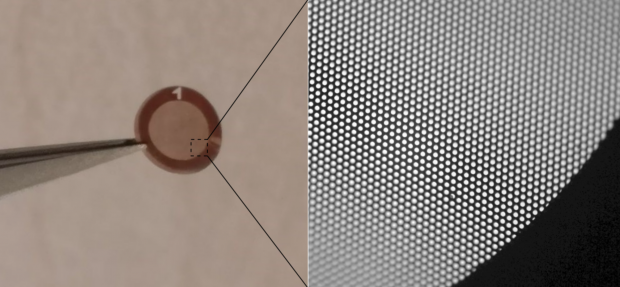
Breaking News
 The Fed's Pivot: The Return of Easy Money and the Inflation Storm Ahead
The Fed's Pivot: The Return of Easy Money and the Inflation Storm Ahead
 This One-Person eVTOL Will Soon Offer Bird's-eye Views of Las Vegas
This One-Person eVTOL Will Soon Offer Bird's-eye Views of Las Vegas
 Emergency Update: Steve Slepcevic Reports Live on Hurricane Melissa's Devastation in Jamaica
Emergency Update: Steve Slepcevic Reports Live on Hurricane Melissa's Devastation in Jamaica
Top Tech News
 Graphene Dream Becomes a Reality as Miracle Material Enters Production for Better Chips, Batteries
Graphene Dream Becomes a Reality as Miracle Material Enters Production for Better Chips, Batteries
 Virtual Fencing May Allow Thousands More Cattle to Be Ranched on Land Rather Than in Barns
Virtual Fencing May Allow Thousands More Cattle to Be Ranched on Land Rather Than in Barns
 Prominent Personalities Sign Letter Seeking Ban On 'Development Of Superintelligence'
Prominent Personalities Sign Letter Seeking Ban On 'Development Of Superintelligence'
 Why 'Mirror Life' Is Causing Some Genetic Scientists To Freak Out
Why 'Mirror Life' Is Causing Some Genetic Scientists To Freak Out
 Retina e-paper promises screens 'visually indistinguishable from reality'
Retina e-paper promises screens 'visually indistinguishable from reality'
 Scientists baffled as interstellar visitor appears to reverse thrust before vanishing behind the sun
Scientists baffled as interstellar visitor appears to reverse thrust before vanishing behind the sun
 Future of Satellite of Direct to Cellphone
Future of Satellite of Direct to Cellphone
 Amazon goes nuclear with new modular reactor plant
Amazon goes nuclear with new modular reactor plant
 China Is Making 800-Mile EV Batteries. Here's Why America Can't Have Them
China Is Making 800-Mile EV Batteries. Here's Why America Can't Have Them
Integrating Quantum Dot Instruments on Solar Sails For Breakthrough Distant Exploration

Unlocking these discoveries will enable us to better understand Earth and the formation and evolution of our solar system and countless others. However, due to the high cost and production scaling difficulty, outer solar system exploration has been extremely limited: celestial bodies beyond Saturn have been visited only once in more than 60 years of space exploration. Furthermore, long travel time scales up mission complexity by adding to operations cost, the need for expertise retention over the mission lifetime, and the chance of hardware failures in the harsh space environment.
Solar sails may offer a drastically new approach for deep space exploration paving the way to low cost and fast-transit missions. Recent studies, including NIAC studies, indicate that solar sails can reach over 10 AU/year which would allow us to reach Uranus in less than 2 years and Neptune in less than 3 years, unprecedented with today's propulsion technology. Nevertheless, owing to very stringent mass requirement, solar sails have limited capability for science payloads when compared to flagship class mission spacecraft.
Here, researchers propose a ScienceCraft – a game changing mission concept that integrates a science instrument and spacecraft into one monolithic structure. By printing a quantum dot-based spectrometer, developed by the PI Sultana (ROSES), directly on the solar sail material, developed by CoI Davoyan, they would create a breakthrough spacecraft architecture allowing an unprecedented parallelism and throughput of data collection, and rapid travel across the solar system. Unlike conventional solar sails that serve only to propel small cubesats, ScienceCraft puts its vast area at use for spectroscopy, pushing the boundary of scientific exploration of outer solar system. ScienceCraft offers an attractive low resource platform that can enable science missions at a significantly lower cost and provide a large number of launch opportunities as a secondary payload. Several ScienceCraft working synchronously would be capable of reaching Neptune-Triton system in just a few years and enable acquisition of large amounts of data.

 Handicapped America
Handicapped America China Innovates: Transforming Sand into Paper
China Innovates: Transforming Sand into Paper

